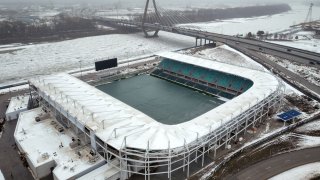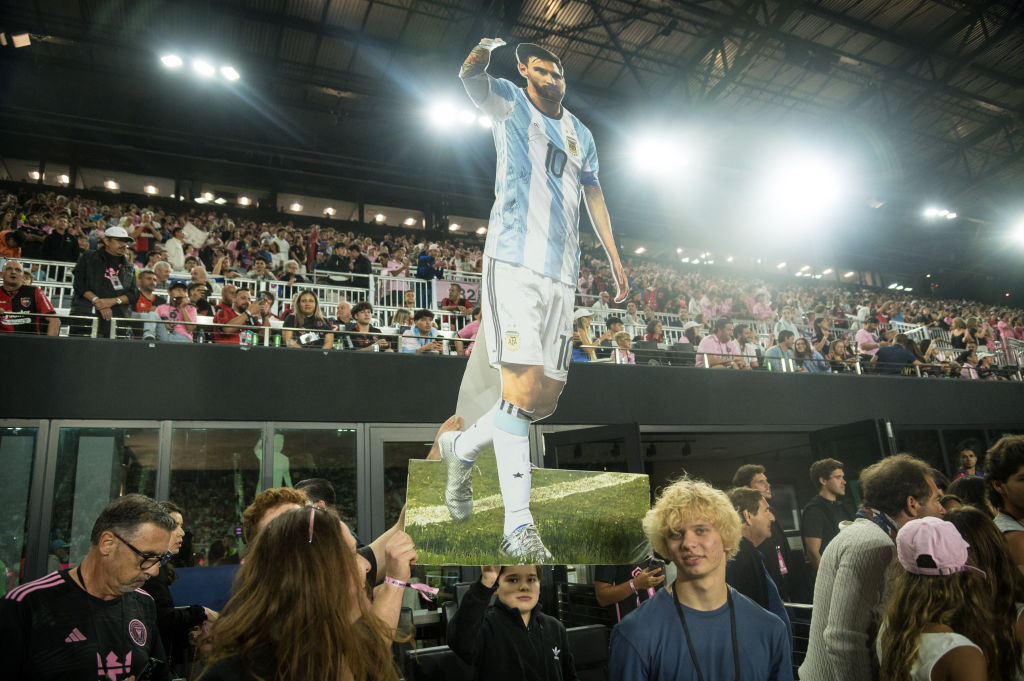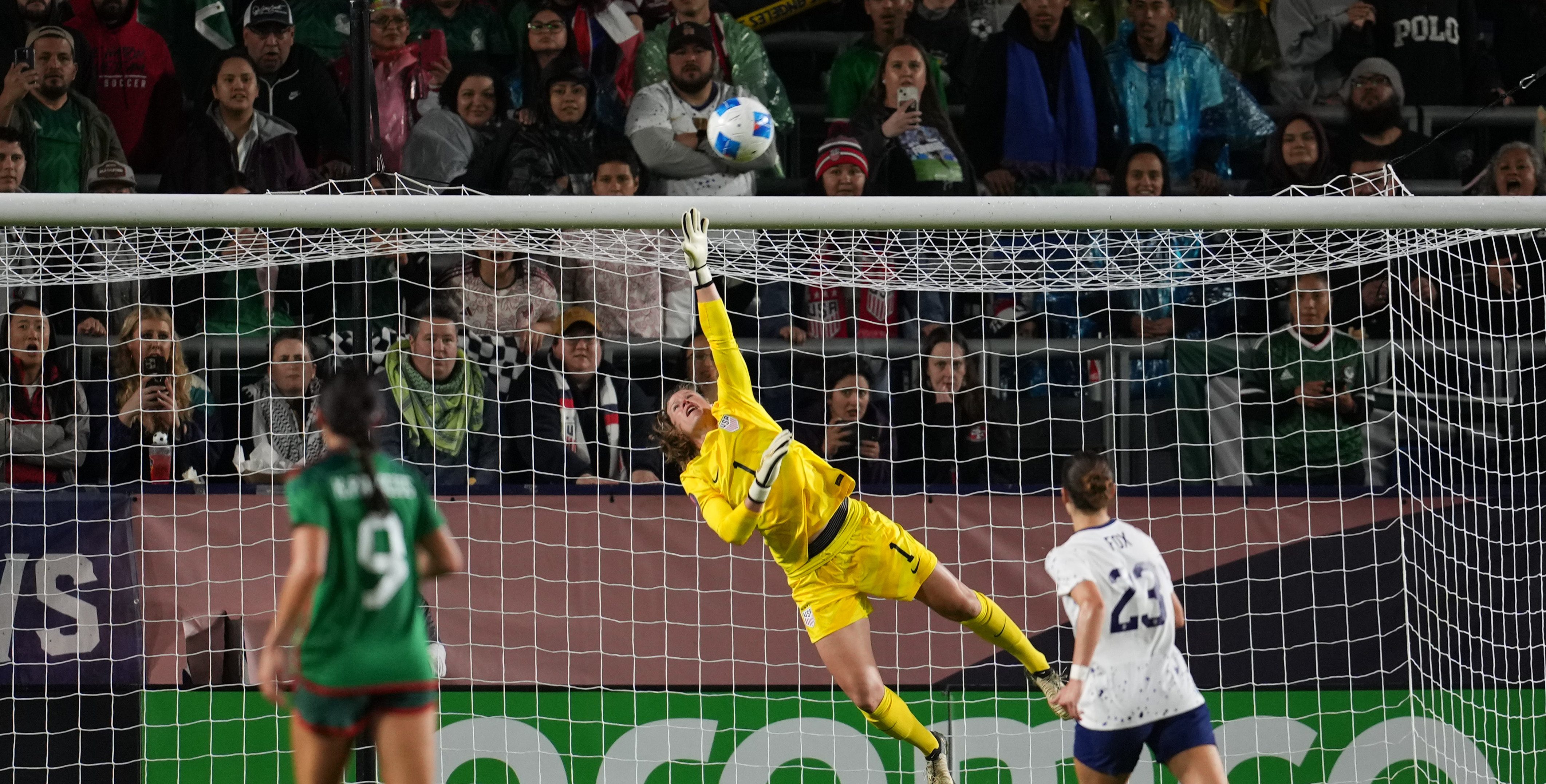
One by one the women walked onto the field for the first time, shortly before they departed for a warm-weather camp in Florida, and gazed at the stands towering above them on three sides and the scoreboard looming over them on the fourth.
For the first time, they felt as if they were home.
That's because for the first time in the history of the National Women's Soccer League — and just maybe, professional soccer worldwide — the Kansas City Current had a home every bit as good as men's teams just for themselves. Built at a cost of nearly $120 million on the banks of the Missouri River, with the downtown skyline just to the south, CPKC Stadium represents one of the few facilities in the world that has been constructed expressly for the use of female athletes.
“I'm very happy for Kansas City," Brazilian star and KC Current forward Debhina would say, “but also for women's soccer.”
We've got the news you need to know to start your day. Sign up for the First & 4Most morning newsletter — delivered to your inbox daily. Sign up here.
The 11,000-seat stadium, almost entirely privately financed, will be christened March 16, when the Current play the Portland Thorns in a game televised by ABC, providing a national showcase for just how far the club and the sport have come.
Start with the game itself, which a century ago in England imposed a ban on women playing pro matches in stadiums used by men. The sport had gone on hiatus during World War I with so many men fighting abroad, and games involving women grew so popular in their stead that 50,000 or more would turn out to watch at places such as Goodison Park.
The sport's governing body, the Football Association, felt threatened by the success and decided the game was “quite unsuitable for females,” and for more than five decades effectively banned women from playing in any FA-affiliated grounds.
The ban eventually was lifted, but it took decades more for the women's game to begin gaining traction around the world. And in the U.S., numerous leagues formed and folded over the years before the NWSL finally found its lasting foothold.
Still, most of the 14 teams in the league rent stadiums, or if they are owned by a Major League Soccer club, play in venues built for the men. The predecessor to the Current, known as FC Kansas City before it folded in 2017, played at various times at a high school football stadium, a college soccer stadium and the training field of MLS club Sporting KC.
When the club reformed as the Current in 2021, it began playing in a minor league ballpark before moving a few blocks over to Children's Mercy Park, one of the jewels of MLS but a stadium that nevertheless belonged wholly to someone else.
But the vision of the Current's ownership group, led by Chris and Angie Long and including investors such as Chiefs quarterback Patrick Mahomes and his wife, Brittany, was to build facilities of their own. They began with an $18 million, purpose-built practice facility, then turned their attention to the stadium, where they could control standards, scheduling and, most importantly, revenue.
“It raises the bar,” Chris Long said told The Associated Press. “People are going to want to be there. They are going to want to be in Kansas City. And I think that's going to cause a ripple-effect globally, putting forward elite facilities for women athletes.”
With women's sports on the rise, the timing hardly could be better.
The most recent season of the WNBA, whose basketball teams generally rent out facilities, is coming off its highest television viewership in more than two decades. The first season of the Professional Women's Hockey League is underway. And viewership of college sports, highlighted by Iowa basketball star Caitlin Clark's pursuit of scoring history, also has been on the rise.
Nor could the timing be better in Kansas City, where a golden age of sports is underway.
The Royals, who won the World Series in 2015, are planning to build a new downtown stadium by 2028 as part of a $2 billion-plus public-private partnership. The Chiefs are coming off back-to-back Super Bowl titles, will try to become the first team in NFL history to three-peat this coming season, and are aiming for an $800 million renovation of their own at Arrowhead Stadium.
Sporting KC remains a popular draw, as do several minor league teams in the area, while the NCAA wrestling championships and Big 12 basketball tournaments will soon take place at the nearby T-Mobile Center.
“From the beginning,” Angie Long explained, “we wanted to be a tier-one sports team in our city. We have asked to be treated like the Chiefs and the Royals and Sporting KC, and our expectation of ourselves is that's what we can mean to our city.”
Angie Long remembers being asked to attend an FC Kansas City game a decade ago, long before her ownership of its successor.
"I was like, ‘Where’s the game?' It was at the high school,” she recalled. “The whole premise of that's what women's sports is, we want to break that mold. If you treat women's sports with this level of growth and investments, what can it be?”
Season tickets have been sold out for months, and the demand for single-game seats is strong enough that some fans already are wondering when the stadium will expand. It was designed so that seats can be added in the future.
Yet the construction of CPKC Stadium — naming rights were sold to the Canadian Pacific Kansas City railway — has not been without detractors. Some are concerned about property values and traffic congestion, others a lack of parking; the club recently said spots would cost $50 per match, and many fans took to social media to express their outrage.
The club hopes many take advantage of ride-share options and public transportation to alleviate the parking concerns.
In the meantime, the countdown is on for the opening of one of the few stadiums in the world built for a women's team in any sport, and for showcasing what that could mean for professional teams elsewhere going forward.
"It definitely brings energy,” former U.S. national team-turned-Current coach Vlatko Andonovski said. “When we trained in the stadium before going to Florida, the training was energetic and enthusiastic and intense, and we talked about: Can you imagine doing all of this with 11,000 people in the stands? It's exciting, and I hope we can use it to our advantage.”



